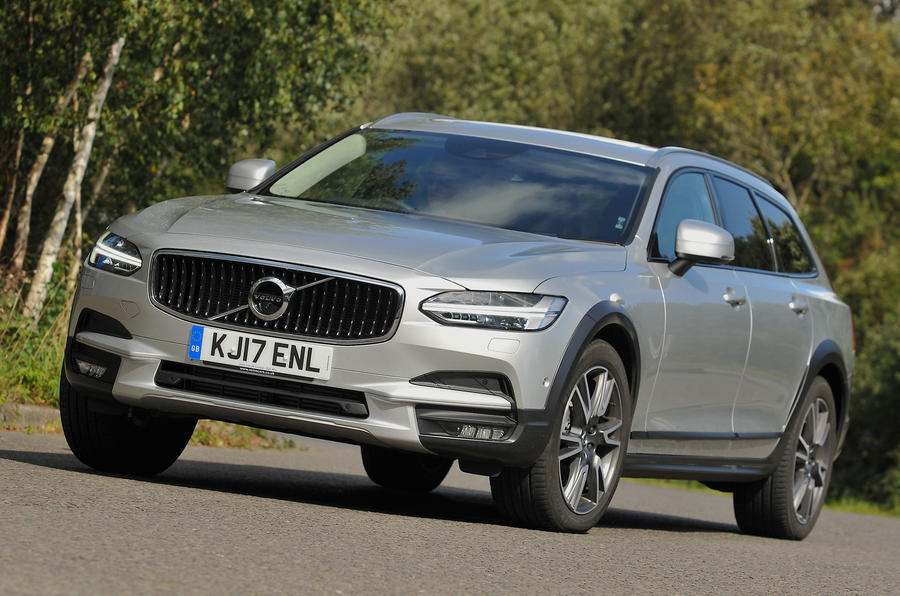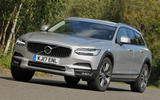What is it?
Volvo has offered a rugged off-road estate car like this Volvo V90 Cross Country since the mid-1990s and has nearly had the market to itself. Yes, there has been the Subaru Legacy Outback, but sales of that car were hamstrung by its petrol-only range of engines for a long time, it only getting diesel options more recently.
With the onset of a backlash against cars that drink from the black pump, Volvo has gone the other way and fitted a petrol engine to its most expensive estate car, meaning it now offers greater powertrain variety than its closest rivals, the Audi A6 Allroad and the new Mercedes E-Class All-Terrain.
Quite a lot has changed since Volvo launched its first off-road estate - not just the popularity of the the full-size SUV. But the Swedish firm has managed to maintain its position in the market by offering Cross Country - badged XC - versions of the V70 estate. Its replacement, the V90 Cross Country, has a raised ride height, an off-road mode and exterior body cladding in black plastic or painted in the exterior body colour of the car for a bit more money.
Instead of the more usual diesel that is common in a car of this type, Volvo has put its highest-output 2.0 four-cylinder petrol into the most expensive V90 Cross Country you can buy. With 316bhp, the T6 is a lot faster on paper than the D5 Powerpulse, dropping the 0-62mph time to 6.3sec.

What's it like?
All of what we’ve concluded about the diesel car still applies to this new T6. It still has a more supple ride than the Volvo V90 on which it’s based, meaning it smooths out the initial shock of sunken drain covers with aplomb and is relaxing in general. When pushed, it will roll to a greater degree, but that seems a worthwhile trade-off given the raised ride height and higher levels of comfort the Cross Country provides.
The important bit is the new engine. Much has been written about Volvo downsizing its engines; however, the main point is it now uses the same engine size for all models in the range, increasing power output through the use of different forced-induction systems. This T6 runs a supercharger for when the engine is running at low revs, with a turbo taking over at higher revs. The idea is that both systems, on their own, have limitations, but by combining the two on one engine you can mitigate them.
On the whole, it works. This engine is incredibly strong, managing to provide impressive mid-range power when you need to overtake or merge onto a motorway, but it is let down by its slow-acting eight-speed automatic. It also doesn’t feel all that mighty around town, owing to a dead spot in the initial travel of the throttle pedal. It’s something you have to get used to - otherwise, the uninitiated might try pushing the pedal a bit further down to stoke the car into action and then get a bit too much acceleration.




























Join the debate
Add your comment
I'm going to test one of these
I want to see if there is any way I can replace my discovery with one in January. Not convinced, but worth a look. I'd have to buy a tow car too, but I can live with that.
i like the idea of a petrol, but will probably go for a diesel for all the reasons above. Some half decent discounts available too.
"Yes, there has been the
"Yes, there has been the Subaru Legacy Outback, but sales of that car were hamstrung by its petrol-only range of engines for a long time, it only getting diesel options more recently."
...and the fact that you cannot find a Subaru dealer for love nor money.
oh...